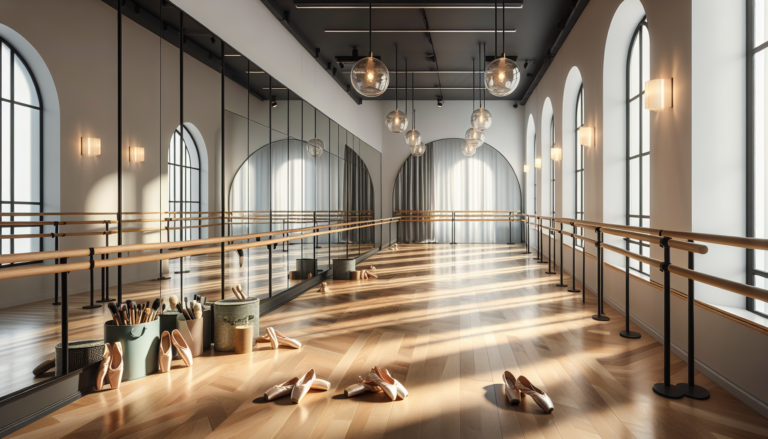Dance lifts are a stunning and impressive element of partner dancing that can take your performance to new heights. Whether you’re a beginner or an experienced dancer, mastering the art of dance lifts can add an exciting dimension to your routines. In this article, we’ll explore 12 easy dance lift techniques that you can incorporate into your dancing, along with tips for preparation and practice.
Introduction to Dance Lifts
Dance lifts are a beautiful way to showcase the connection and trust between dance partners. When executed properly, they can create breathtaking moments on the dance floor that captivate audiences. However, dance lifts also require careful preparation, technique, and safety precautions to ensure a successful and injury-free performance.
What Are Dance Lifts?
Dance lifts are partnering movements in which one dancer physically lifts another dancer off the ground. These lifts can range from simple, stationary poses to more complex, dynamic movements that involve spinning, flipping, or rotating. Dance lifts are commonly seen in various dance styles, including ballet, contemporary, jazz, and ballroom dancing.
Partner dance lifts require a strong connection and communication between the lifting partner (the base) and the lifted partner (the flyer). The base must have sufficient strength and stability to support the flyer’s weight, while the flyer must maintain proper body alignment and control throughout the lift.
Benefits of Learning Dance Lifts
Incorporating dance lifts into your repertoire can provide numerous benefits for your dancing:
- Enhancing performance: Dance lifts add visual interest and excitement to your routines, creating memorable moments for the audience.
- Building trust and connection: Practicing lifts requires partners to develop a strong sense of trust and communication, which can translate into improved overall dance partnering skills.
- Increasing strength and control: Executing dance lifts safely requires dancers to develop greater core strength, stability, and body awareness.
- Expanding choreographic possibilities: Having a variety of lift techniques in your toolkit allows for more creative and diverse choreography options.
Preparing for Dance Lifts
Before attempting any dance lifts, it’s essential to properly prepare your body and ensure a safe practice environment. Taking the time to warm up, learn proper technique, and establish clear communication with your partner will set you up for success.
Warm-Up Exercises
Engaging in a thorough warm-up before practicing dance lifts is crucial to prevent injuries and ensure your body is ready for the physical demands of lifting. Focus on exercises that target your core, back, shoulders, and legs, such as:
- Planks and side planks to strengthen your core
- Bridges to engage your glutes and hamstrings
- Squats and lunges to warm up your leg muscles
- Arm circles and shoulder shrugs to mobilize your upper body
Incorporate dynamic stretching to further prepare your muscles and joints for the movements involved in dance lifts.
Safety Tips for Dance Lifts
Prioritizing safety is paramount when practicing dance lifts. Always follow these essential safety guidelines:
- Start with a spotter: When learning new lifts, have a qualified instructor or experienced spotter present to guide you and provide support if needed.
- Use proper technique: Learn and consistently apply the correct technique for each lift to maintain control and minimize the risk of injury.
- Communicate clearly: Establish clear verbal and non-verbal cues with your partner to coordinate timing and movements during lifts.
- Work within your skill level: Progress gradually and only attempt lifts that you and your partner feel comfortable and confident executing.
- Practice on mats: Use safety mats or a sprung dance floor when practicing lifts to cushion any potential falls.
12 Easy Dance Lifts to Elevate Your Performance
Now that you’re prepared, let’s dive into 12 easy dance lift techniques that you can start practicing today. Remember to always prioritize safety and work within your skill level.
1. The Peacock
The Peacock is a simple yet stunning dance lift that works well for dancers of different skill levels. To execute the Peacock:
- The flyer starts behind the base, placing their hands on the base’s shoulders.
- The flyer jumps and extends one leg forward while keeping the other leg bent.
- The base catches the flyer’s extended leg and supports them in a balanced position.
- The flyer arches their back and extends their arms gracefully.
Practice the timing and coordination of the jump and catch to achieve a smooth and controlled lift.
2. Cart Wheel Over Legs
The Cart Wheel Over Legs lift combines strength and flexibility for an eye-catching move:
- The base sits on the floor with their legs extended and slightly apart.
- The flyer stands behind the base and grasps their hands.
- With momentum, the flyer performs a cart wheel over the base’s legs.
- The base supports the flyer’s waist as they pass overhead.
- The flyer lands gently on their feet in front of the base.
Focus on maintaining a strong core and straight arms throughout the lift.
3. Straddle Over Back
The Straddle Over Back lift showcases the flyer’s flexibility and the base’s stability:
- The base kneels on one knee with their other leg extended to the side.
- The flyer stands behind the base, placing their hands on the base’s shoulders.
- The flyer jumps, straddling their legs over the base’s back.
- The base supports the flyer’s thighs as they balance in a seated position on the base’s back.
- The flyer extends their arms and maintains a straight posture.
Communication and timing are key to executing this lift smoothly.
4. Front Walkover with Help
The Front Walkover with Help lift adds a touch of acrobatics to your dance routine:
- The base stands with their feet shoulder-width apart and knees slightly bent.
- The flyer stands facing the base, several feet away.
- The flyer performs a front walkover, and the base catches them mid-walkover.
- The base supports the flyer’s waist and gently guides them to complete the walkover.
- The flyer finishes the walkover and lands softly on their feet.
Make sure the base provides firm yet gentle support throughout the lift.
5. Straddle Press
The Straddle Press lift requires strength from both partners and creates a striking vertical line:
- The base stands with their feet shoulder-width apart and arms extended forward.
- The flyer faces the base and places their hands on the base’s shoulders.
- The base bends their knees and grasps the flyer’s waist.
- The flyer jumps and straddled their legs as the base presses them overhead.
- The flyer maintains a straight body position with arms extended.
- The base slowly lowers the flyer back down.
Engage your core muscles and maintain open communication throughout this lift.
6. Reversed Split
The Reversed Split lift is a graceful move that highlights the flyer’s flexibility:
- The base kneels on one knee with their other leg extended forward.
- The flyer stands behind the base, placing their hands on the base’s shoulders.
- The flyer steps onto the base’s extended thigh with one foot.
- The base holds the flyer’s waist as they lift their other leg into a split position.
- The flyer arches their back and extends their arms.
- The base supports the flyer as they hold the split position.
Work on achieving a balanced and controlled split position during this lift.
7. Double Cart Wheel
The Double Cart Wheel lift is a dynamic and exciting move that requires coordination between partners:
- The base and flyer stand side by side, holding hands.
- Both partners perform a cart wheel in unison, maintaining hand grip.
- As they complete the cart wheel, the base catches the flyer’s waist.
- The base assists the flyer in completing a second cart wheel.
- Both partners land simultaneously, finishing the lift.
Synchronization and timing are essential for a successful Double Cart Wheel lift.
8. The Split Over
The Split Over lift is another visually impressive move that combines balance and flexibility:
- The base stands with their feet shoulder-width apart and arms crossed in front of their chest.
- The flyer faces the base and places their hands on the base’s shoulders.
- The base bends their knees and grasps the flyer’s waist.
- The flyer jumps and extends one leg forward and the other leg backward into a split position.
- The base supports the flyer’s waist as they balance in the split position.
- The flyer maintains the split and extends their arms gracefully.
Focus on achieving a full split position while the base provides stable support.
9. The Drape
The Drape lift creates a beautiful and romantic picture, perfect for lyrical or contemporary routines:
- The base stands with their feet shoulder-width apart and arms extended to the sides.
- The flyer stands behind the base, facing the same direction.
- The flyer leans back, draping their body over the base’s arms.
- The base supports the flyer’s back and legs, creating a horizontal line.
- The flyer extends their arms and legs, creating an elongated body position.
- The base slowly lowers the flyer back to the ground.
Trust and communication are key to executing this lift smoothly and safely.
10. The Traveling Basket
The Traveling Basket lift adds a playful and dynamic element to your dance routine:
- The base stands with their feet shoulder-width apart and arms extended forward.
- The flyer faces the base and places their hands on the base’s shoulders.
- The base grasps the flyer’s waist and lifts them into a seated position.
- The flyer wraps their legs around the base’s waist, creating a “basket” position.
- The base supports the flyer’s waist and travels across the dance floor.
- The flyer maintains the seated position and engages their core for stability.
Practice moving smoothly and maintaining balance throughout the traveling lift.
11. The Denzel
The Denzel lift is a show-stopping move that requires strength and precision:
- The base stands with their feet shoulder-width apart and arms extended to the sides.
- The flyer stands behind the base, placing their hands on the base’s shoulders.
- The base bends their knees and grasps the flyer’s thighs.
- The flyer jumps as the base lifts them overhead.
- The flyer extends their body horizontally, parallel to the ground.
- The base supports the flyer’s thighs and maintains a stable stance.
- The base slowly lowers the flyer back down.
Engage your core and leg muscles to maintain a controlled and balanced lift.
12. The Reach
The Reach lift is a romantic and expressive move that showcases the connection between partners:
- The base kneels on one knee with their other leg extended to the side.
- The flyer stands behind the base, placing their hands on the base’s shoulders.
- The flyer steps onto the base’s extended thigh with one foot.
- The base supports the flyer’s waist as they lift their other leg and lean forward.
- The flyer reaches their arms forward, creating a long, extended line.
- The base supports the flyer’s waist and maintains balance.
Focus on creating a smooth and fluid motion throughout the lift.
Tips for Practicing Dance Lifts
Consistent and safe practice is essential for mastering dance lifts. Keep these tips in mind as you work on perfecting your lifting skills:
Finding a Practice Partner
Choosing the right practice partner is crucial for successful and enjoyable lift training. Look for a partner who:
- Has a similar skill level and learning pace
- Communicates openly and respectfully
- Prioritizes safety and follows proper technique
- Has a compatible height and body type for the lifts you want to practice
Building trust and rapport with your practice partner will make the learning process smoother and more effective.
Setting Up a Safe Practice Space
Creating a safe and conducive practice environment is essential for dance lift training. Consider the following factors when setting up your practice space:
- Flooring: Use a sprung dance floor or safety mats to cushion potential falls and protect your joints.
- Space: Ensure you have ample room to move freely and execute lifts without obstacles.
- Mirrors: Practicing in front of mirrors can help you monitor your form and alignment.
- Ventilation: Choose a well-ventilated area to maintain a comfortable temperature during practice.
A well-prepared practice space will allow you to focus on learning and perfecting your lifts without distractions or safety concerns.
Consistent Practice Routines
Developing a consistent practice routine is key to making steady progress with your dance lifts. Consider the following tips:
- Set achievable goals: Break down your lift learning process into smaller, manageable goals to stay motivated and track your progress.
- Schedule regular practice sessions: Dedicate specific times each week to work on your lifts, ensuring you maintain consistency.
- Warm up and cool down: Always begin your practice sessions with a proper warm-up to prevent injuries and end with a cool-down to promote recovery.
- Focus on technique: Prioritize proper form and technique over the number of lifts or speed of progress to build a strong foundation.
- Videotape your practice: Recording your lift practice can help you identify areas for improvement and track your development over time.
Remember, mastering dance lifts takes time, patience, and dedication. Celebrate your progress and enjoy the learning process!
Conclusion
Dance lifts are a beautiful and exciting way to elevate your dance performance and showcase the connection between partners. By learning and practicing these 12 easy dance lift techniques, you can add a new dimension to your routines and captivate your audience.
Recap of Key Points
- Dance lifts require proper preparation, technique, and safety precautions.
- Incorporating dance lifts can enhance your performance, build trust with your partner, and expand your choreographic possibilities.
- The 12 easy dance lifts covered in this article include The Peacock, Cart Wheel Over Legs, Straddle Over Back, Front Walkover with Help, Straddle Press, Reversed Split, Double Cart Wheel, The Split Over, The Drape, The Traveling Basket, The Denzel, and The Reach.
- Consistent and safe practice, finding the right partner, setting up a conducive practice space, and developing a regular practice routine are essential for mastering dance lifts.
Encouragement to Keep Practicing
Learning dance lifts is a rewarding journey that requires dedication and perseverance. Embrace the challenges, celebrate your accomplishments, and remember that every practice session brings you one step closer to mastering these stunning techniques. Keep pushing yourself, trust your partner, and most importantly, have fun along the way!
With commitment and consistent practice, you’ll soon be incorporating these 12 easy dance lifts into your routines, creating unforgettable moments on the dance floor. So go ahead, grab your partner, and start elevating your dance performance today!
#EN#






